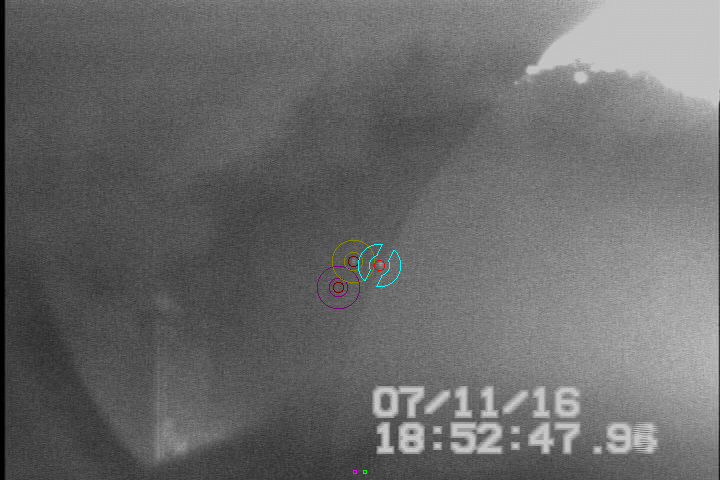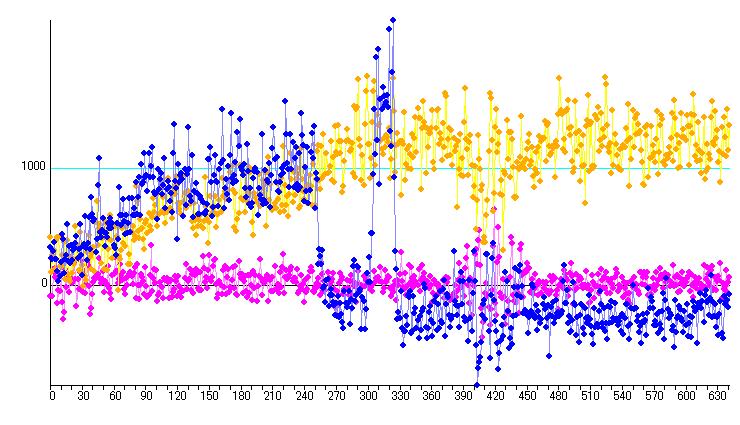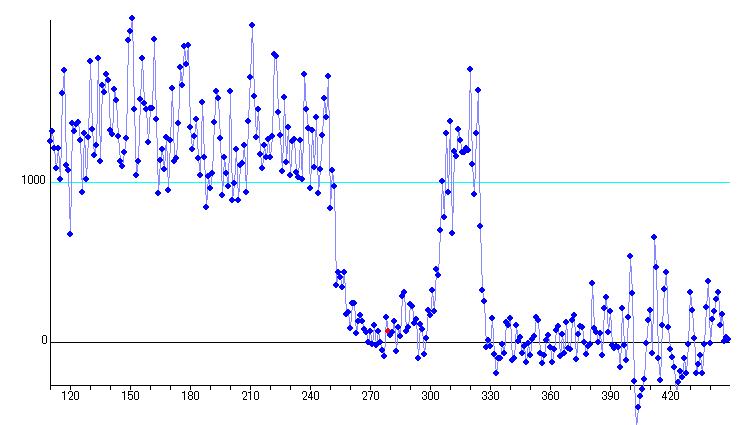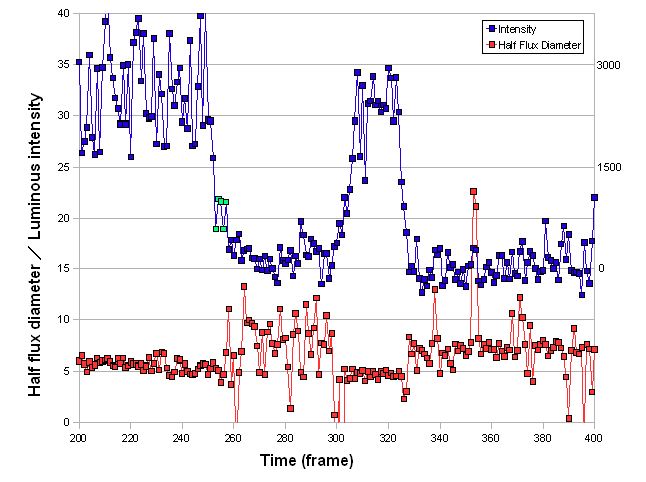
A improvement of photometric analysis for an event influenced by thin cloud
- Analyzing SAO189403(XZ28551) grazing occultation -
Nov.18 2007, Kazuhisa Miyashita
1. Introduction
Masayuki Ishida kindly sent me a video clip recorded SAO189403 grazing occultation.
The target star SAO189403 is flickered by flowing thin clouds. As a result of this situation, the lightcurve is so defigured that it is not clear enough to obtain some useful information. Fortunately, SAO189403 is double star which has a component(SAO189405) 39 arcsec separated. The shading effect of the cloud can be estimated from the luminous change of the SAO189405 as compared star. And also SAO189405 can be used as a base point of Linked Tracking. These photometric technic of the Limovie is used effectively, and good lightcurve was obtained from this observation videotape.
2. Prediction of this event
Table 1. Prediction of SAO189403 and SAO189405 grazing occultation for Konohama, Shiga by OCCULT4.0
|
Occultation prediction for Ishida Konohama E. Longitude 135 56 33.6, Latitude 35 6 22.3, Alt. 86m; Telescope dia100cm; dMag 0.0 day Time P Star Sp Mag Mag % Elon Sun Moon CA PA VA AA Libration A B RV Cct R.A. (J2000) Dec y m d h m s No D v r V ill Alt Alt Az o o o o L B m/o m/o "/sec o h m s o m s 07 Nov 16 9 54 51 M 189403WF0 7.7 7.5 34+ 71 26 213 19S 148 119 161 -7.5 +3.7 +9.9+9.9 .000 -90 20 32 13.3 -22 9 17 189403 is double: 7.7 8.1 39" 128.7 07 Nov 16 9 55 0 Gr 189403WF0 7.7 7.5 34+ 71 25 ** GRAZE: CA 19.0S; Dist. 44km in az. 316deg. [Lat =35.65+0.78(E.Long-135.94)] 07 Nov 16 9 55 22 M 189405SF0 8.1 7.9 34+ 71 25 213 19S 148 119 161 -7.5 +3.7 +9.9+9.9 .000 -90 20 32 15.5 -22 9 42 189405 is triple: 9.2 9.2 0.10" 44.0 : 8.1 7.7 39" 308.7 |
3. Weather condition and Photometry
Figure 1 shows a snapshot of the video clip. Thin cloud is flowed over the moon and target star. Three measurement region are used for this photometry. The blue region is for target star (SAO189403); yellow region is for compared star (SAO189405) ; magenta region is for sky background. The dark area of the moon face was brighten by the earth shine. In this case, Limovie's measurement region of target star is centred on the moon face by the work of star tracking feature. It will be a cause of obtaining inaccurate luminous data. The function called Linked tracking is able to avoid such behavior of measurement region. The region for the target star doesn't move on the surface of the earth shined moon because it moored at the region centred on the compared star.
The result of measurement is shown in Figure 2. The light change reflects the situation that the clouds has been thinning gradually and masses of small thick cloud flowed from 380 to 440 frame.

Figure 1 A snapshot of video clip of SAO189403 grazing occultation.

Figure 2 Light curve (Raw Data) obtained from Limovie photometric analysis.
4. Improvement of light curve
In figure2, there are stable luminous value after 500 frame (see yellow line). Therefore the averaged value of these frames is treated as standard brightness value of SAO189405 (compared star) for estimating the target star's luminous change due to occultation.
The luminous intensity (I) of target star is calculated as:
I = (Io-At) * (Ic-Ab) / (Ac - Ab) ... (1)
Io is the measurement value of target star; Ic is the measurement value of compared star (5 frame moving average); At is the averaged value of deappeared target star; Ac is averaged full light value; Ab is averaged light value of background area near the measurement region of compared star; The value from 500 frame to 600 frame are used to calculate the average.
The result of this improvement is shown in Figure 3. The frames full bright of target star has rather constant value. From this we can understand the light value during light dropped frame has rather higher accuracy.

Figure 3. Improved light curve
This is a result of the calculation shown in formula (1).
The light change shapes the diffraction curve. Moreover a small step is formed at about 250 frame. Half Flux Diameter of this STEP frames are almost small value “5 “, therefore we can explain the target star is not disppeared in those frames yet. However, it is not clear whether the step depends of a effect of double star or it depend on the geographical feature because the image of video is noisy and indistinct.
